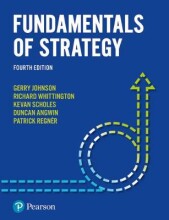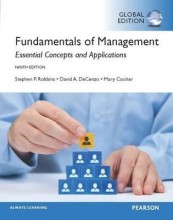Summary: H23 - Biotische Evolutie
- This + 400k other summaries
- A unique study and practice tool
- Never study anything twice again
- Get the grades you hope for
- 100% sure, 100% understanding
Read the summary and the most important questions on H23 - Biotische evolutie
-
1 -
This is a preview. There are 5 more flashcards available for chapter 1
Show more cards here -
What are the 8 general properties of living systems?
- Chemical uniqueness. Living systems demonstrate a unique and complex molecular organization.
- Complexity and hierarchical organization. Living systems demonstrate a unique and complex hierarchical organization.
- Reproduction. Living systems can reproduce themselves.
- Possession of a genetic program. A genetic program provides fidelity of inheritance.
- Metabolism. Living organisms maintain themselves by acquiring nutrients from their environments.
- Development. All organisms pass through a characteristic life cycle.
- Environment interaction. All animals interact with their environments.
- Movement. Living systems and their parts show precise and controlled movements arising from within the system.
-
What were the first living organisms?
The first living organisms were protocells, autonomous membrane-bound units with a complex functional organization that permitted the essential activity of self-reproduction. -
What evolved after photosynthesis?
Because of photosynthesis the atmosphere contained more and more oxygen and oxidative (aerobic) metabolism evolved. -
What is the composition of the atmosphere nowadays?
- 78% nitrogen
- 21% free oxygen
- 1% argon
- 0,03% carbon dioxide
- 78% nitrogen
-
When was the Precambrian period?
Before the beginning of the Cambrian period, about 570 to 600 million years BP (before present), -
2 -
This is a preview. There are 6 more flashcards available for chapter 2
Show more cards here -
What were the first bacterium-like organisms and when did they exist?
Cyanobacteria. They lived 3 billion years ago. -
When did the first eukaryotes arise?
At least 1.5 billion years ago. -
What is the common descent theory?
That we should be able to trace genealogies (family history) of all modern species backwards until they converge on ancestral lineages shared with other species, both living and extinct. -
What are allopatric populations?
- Allopatric populations of a species are those that occupy separate geographical areas.
- They cannot interbreed because of geographic separation, bur would do so if the barriers were removed.
- Allopatric populations of a species are those that occupy separate geographical areas.
-
3 -
This is a preview. There are 5 more flashcards available for chapter 3
Show more cards here -
What are sibling species and when do they arise?
- Species that are indistinguishable in appearance.
- They arise when allopatric populations diverge in the seasonal timing of reproduction or in auditory, behavioral or chemical signals required for mating. Divergence in these features can produce effective premating barriers without obvious changes in appearance.
- Species that are indistinguishable in appearance.
- Higher grades + faster learning
- Never study anything twice
- 100% sure, 100% understanding































